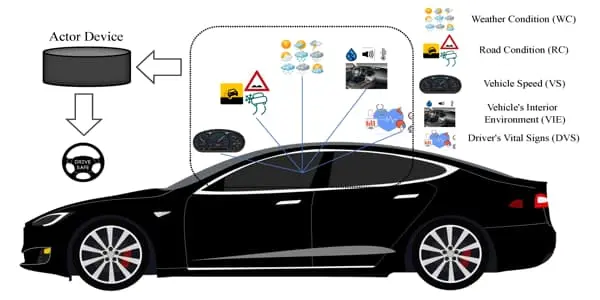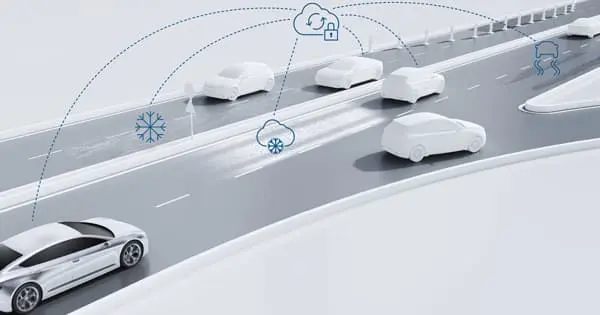Researchers have developed heat-resistant, pressure-detecting sensors that, when attached to seats, can detect whether a driver is drowsy or has a sudden illness, alerting a future smart car to take action. According to the researchers, in the future, a monitoring system based on the sensors could detect changes in vital signs or body posture, triggering a self-driving car to find a safe location and then stop.
President Joe Biden recently signed into law a bipartisan infrastructure bill that includes a requirement for automakers to install driver monitoring systems that detect intoxicated or impaired drivers. Current systems rely on cameras, which have limitations. Now, researchers reporting in ACS Applied Electronic Materials have developed heat-resistant, pressure-detecting sensors that, when attached to seats, can detect whether a driver is drowsy or has a sudden illness, alerting a future smart car to take action.
The majority of modern drowsiness detection systems employ an exterior, forward-facing camera to monitor lane position or sudden, exaggerated corrections. Others use an interior camera to look for signs of nodding off in a driver’s face or eyes. While camera-based systems are useful, they have drawbacks. An exterior camera, for example, may be obstructed by mud, whereas an interior camera may be less effective at night.
Researchers developed heat-resistant, pressure-detecting sensors that, when attached to seats, can detect whether a driver is drowsy or has a sudden illness, alerting a future smart car to take action.
Toshimi Nagase
Previously, scientists investigated the use of piezoelectric sensors (self-powered materials that accumulate an electrical charge in response to pressure) to monitor a driver’s posture, which changes when a person falls asleep, has a sudden health emergency, or is intoxicated. Existing piezoelectric sensors, on the other hand, cannot withstand high temperatures, which is a requirement for electrical and electronic equipment in vehicles. Toshimi Nagase and colleagues wanted to create flexible, heat-resistant piezoelectric sheet sensors that could be embedded in a vehicle’s seat and used to monitor the driver’s posture.
To create a piezoelectric sheet, the researchers created zinc oxide-based films directly on a polyimide surface and then screen-printed a silver paste on both sides. They used a coaxial cable to detect changes in electrical charge caused by pressure, then folded the sheet in half around the cable. The sensor sheet withstood heating up to 250 degrees Fahrenheit with no changes in its properties. The team placed a sensor in the back of a chair after demonstrating that the sensor could discriminate changes in mechanical load.
The sensor detected a seated person’s slight body movements, allowing researchers to calculate the person’s respiration and pulse rates. Two additional sensors attached to a chair’s seat could detect when a person leaned left or right with their upper body, which could indicate drowsiness.

According to the researchers, in the future, a sensor-based monitoring system could detect changes in vital signs or body posture, triggering a self-driving car to find a safe location and then stop. Depending on the circumstances, the vehicle may also contact emergency medical personnel. To get there, the team says the piezoelectric sensors will be tested in a car, where vehicle motions and vibrations will contribute to background noise in the measurements.
The majority of current drowsiness detection systems use an external forward-facing camera to monitor lane position and sudden exaggerated adjustments. Others use an internal camera to look for signs of sleepiness in the driver’s face and eyes. Camera-based systems are convenient, but they are not without flaws. An external camera, for example, may be obstructed by mud, whereas an indoor camera may be less effective.
Previously, scientists considered the use of piezoelectric sensors. These are self-powered materials that accumulate charge in response to pressure and monitor the driver’s changing posture when he or she falls asleep, has a sudden health emergency, or becomes inebriated. It can be used for Nonetheless, existing piezo sensors cannot withstand the high temperatures required by vehicle electrical and electronic equipment.
Sensor-based surveillance systems will detect vital signs and changes in body posture in the future, according to researchers. Autonomous vehicle Stop in a safe location. In some cases, the vehicle will contact an emergency care provider. To get there, the next step is to put the car’s piezo sensors to the test. The background noise of the measurement is caused by the movement and vibration of the car.





